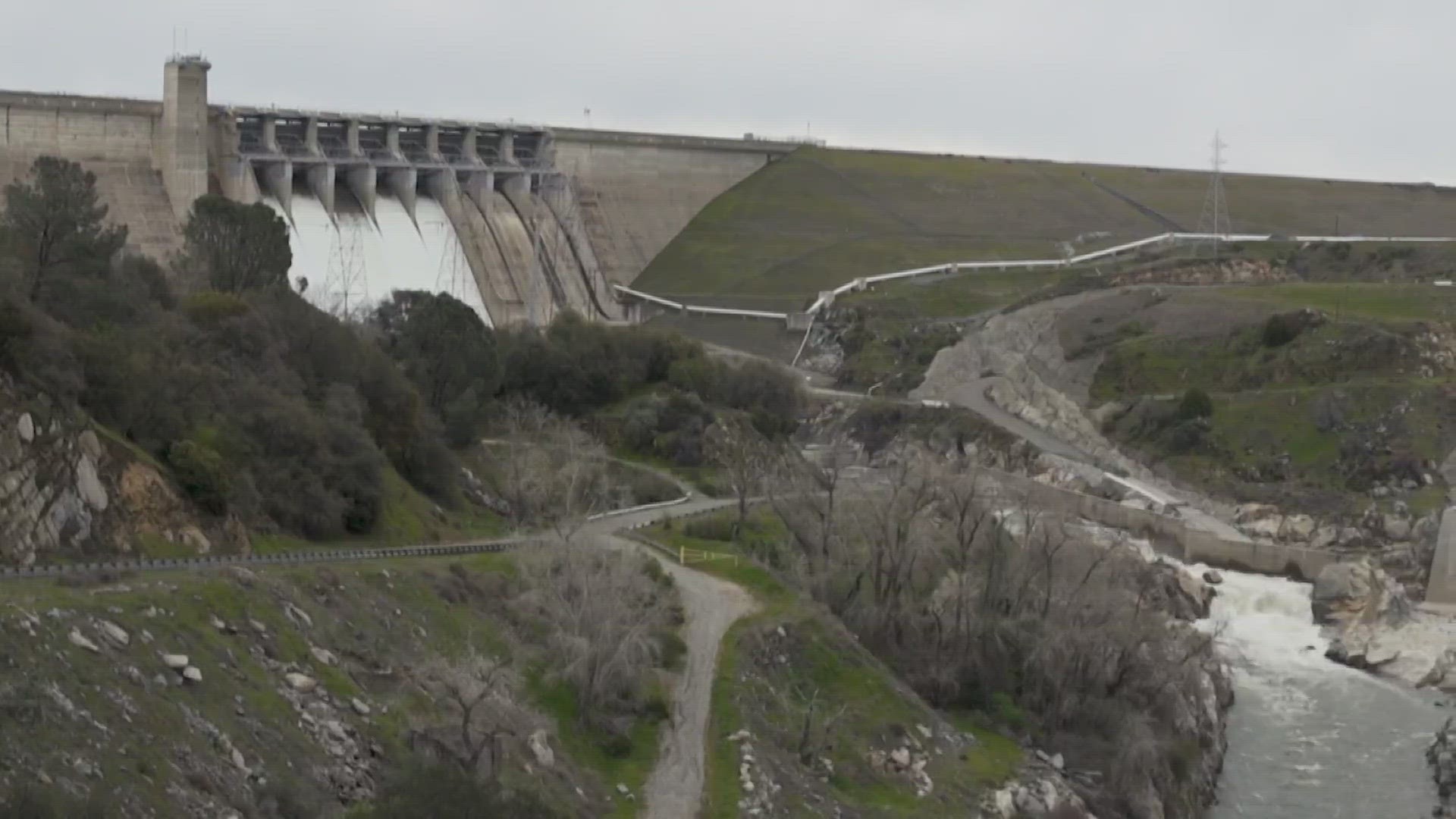SACRAMENTO, Calif. — On a briefing Thursday afternoon, the California Department of Water Resources updated the public on their plans to manage the incoming rain and snowmelt with this strong atmospheric river.
"We are preparing for a series of atmospheric rivers that would arrive tonight and have significant impacts on many parts of California," said the Department of Water Resources Director Karla Nemeth, during the Thursday media briefing. "DWR's Flood Operations Center is activated and we are monitoring forecasts and runoff conditions closely."
The Department of Water Resources controls Oroville Dam, which is also beginning releases ahead of the atmospheric river. Thursday's releases will start at 3,500 cfs but will be upped to 7,000 cfs by the end of the day. On Friday, DWR will conduct 15,000 cfs releases.
The Bureau of Reclamation, which controls Folsom, has been releasing 5,000 cubic feet per second (cfs) of water from the lake. That number will increase to 15,000 cfs late Thursday. They are prepared to make releases of 30,000 cfs on Friday, with more if they determine it's needed.
At Oroville, the water will be released from both the hydropower plant as well as the spillway. This will be only the second time water will be released via the reconstructed spillway. The first was in April 2019.
Even though Shasta is below average to this point in the year, Reclamation will also be conducting small releases from the lake of about 3,500 cfs.
"With the abundant rain coming from these atmospheric rivers, we will see flood impacts, again, impact much of the state," said Michael Anderson, the state climatologist for California.
As far as flood control measures go, the five passive weirs along the Sacramento and Feather rivers are expected to flow, though DWR also expects to keep the Sacramento Weir closed. The last time the Sacramento Weir was opened was in 2017.
DWR also shared during Thursday afternoon's press conference that they do not expect Trinity Lake in the northwestern part of the state to fill this year. This would be a sore spot in an otherwise very good water year. Trinity is largely dependent on Northern Sierra snowpack, which has been lagging behind the rest of the state, despite currently being above the April 1st average. It's a glaring example of just how very dry we have been over the last several years.
WATCH ALSO:



















